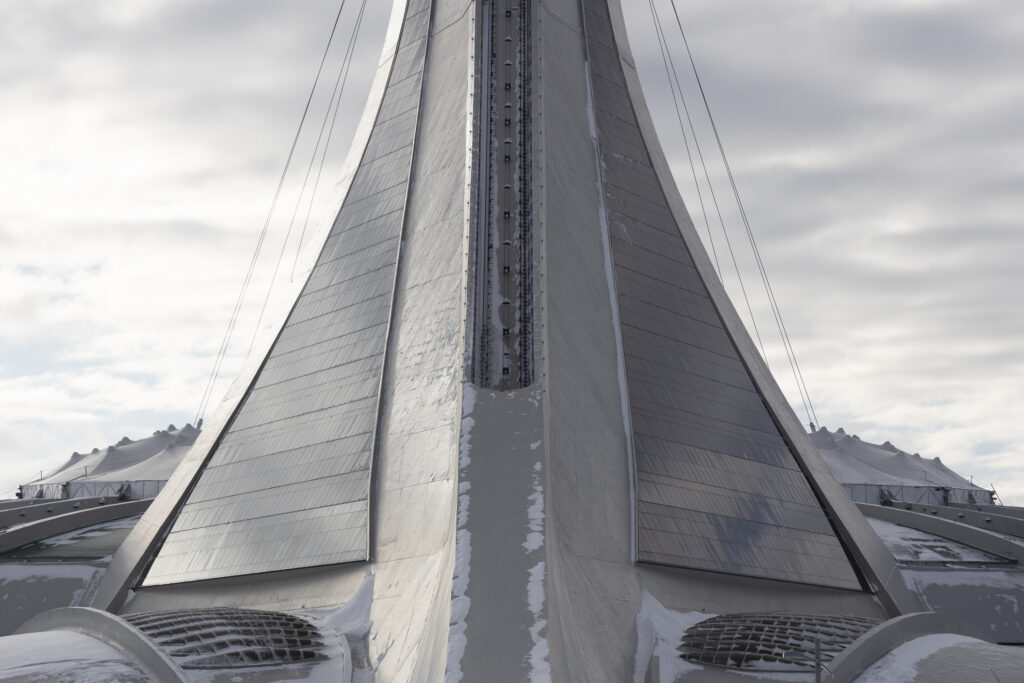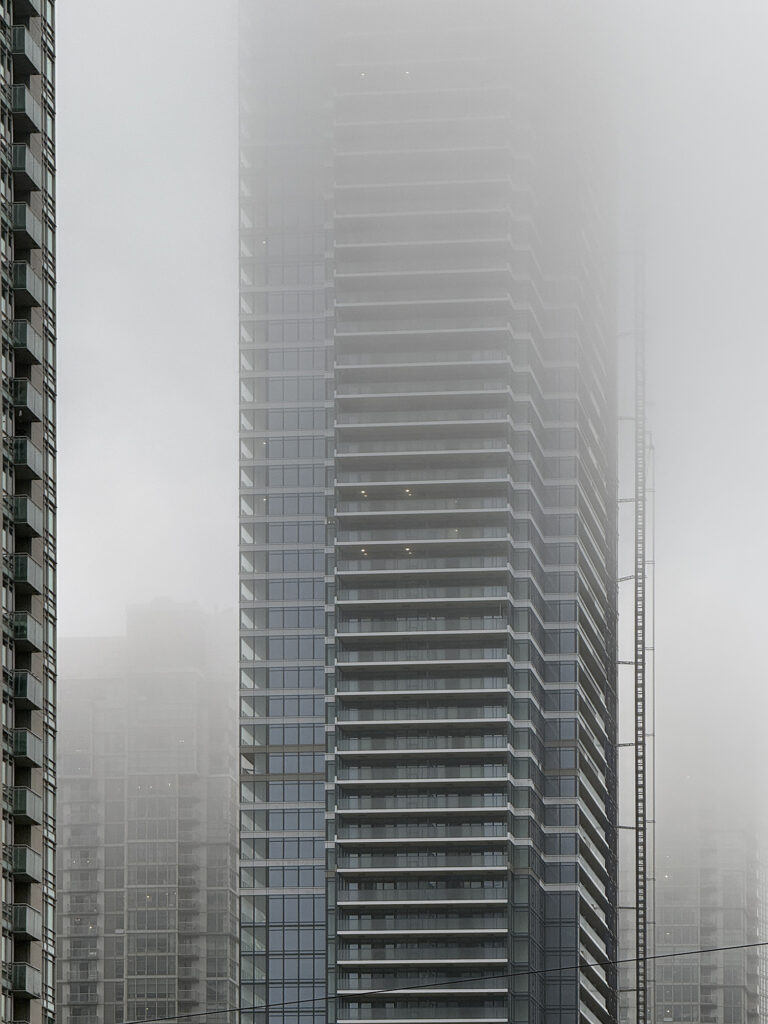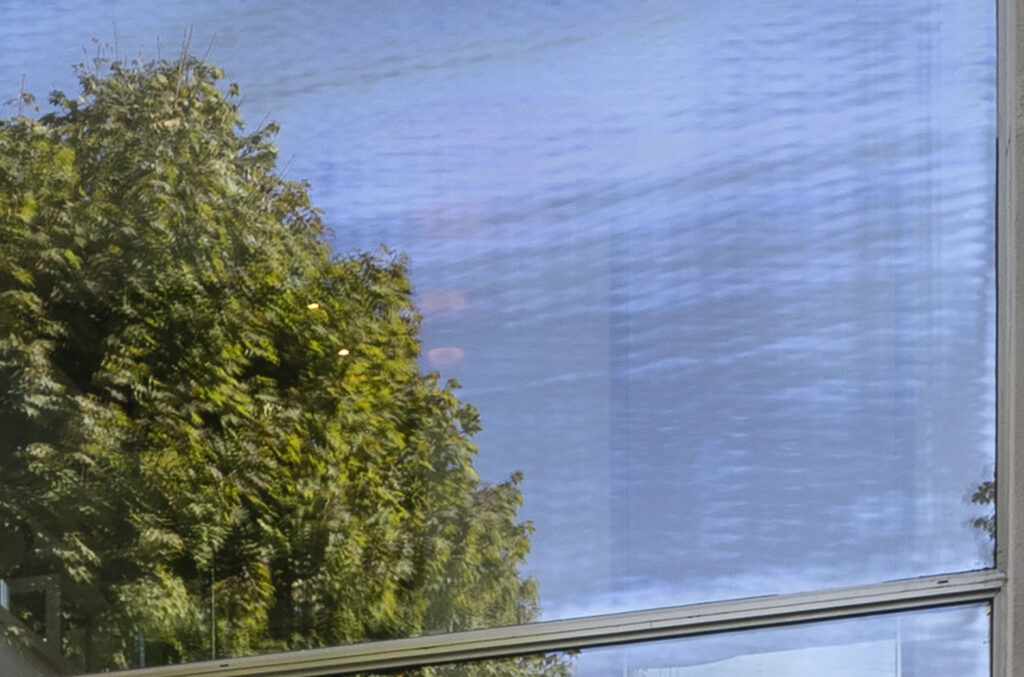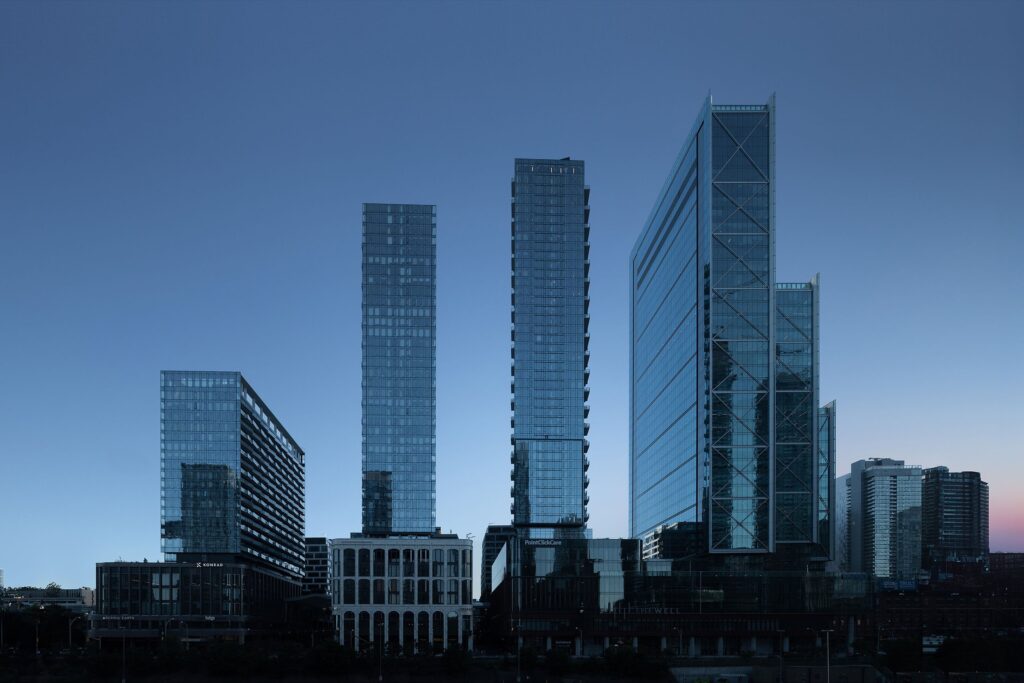Introduction
High-Rise Photography in Mississauga showcases the city’s rapid transformation into a hub of modern skyscrapers, corporate towers, and iconic residential structures. With landmarks like the Absolute Towers (commonly known as the Marilyn Monroe Towers), the Exchange District, and the cluster of high-rises around Square One, the city offers unique opportunities for high-rise photography. Whether using drones to capture aerial perspectives or shooting from the ground to emphasize scale and architectural details, mastering high-rise photography requires a blend of technique, equipment, and an understanding of light and seasonal effects.
Key Tips for High-Rise Photography
1. Best Time of Day
I believe Success in High-Rise Photography in Mississauga is closely linked to selecting the best time of day! That’s why I’m starting with light conditions. No matter How much I try for a good Composition, it’s a failure when the light is not right!
- Golden hour (sunrise/sunset): The warm tones and long shadows during sunset enhance textures and give the buildings a dramatic, cinematic quality. This period offers the softest and most flattering light, reducing harsh contrasts that might obscure details. Golden hour also adds a natural glow to glass facades, making high-rises appear more vivid and visually appealing. If your using the drone try to make an bird view shots and incorporate the building with human elements. If you are capturing on the ground try capturing reflections during this time can result in stunning and dynamic imagery.
- Blue hour (just after sunset):
The balance between natural and artificial lights makes this time ideal for High-Rise Photography in Mississauga. illuminated windows and city lights without overexposing highlights. The deep blue sky contrasts beautifully with the warm glow of streetlights and building interiors, creating a sophisticated look. Using a tripod allows for longer exposures that capture intricate light details without motion blur. Blue hour photography often results in highly polished and visually captivating urban shots.
- Midday light: Though harsh, it creates high-contrast effects, ideal for capturing strong geometric patterns and textures on building facades. The bright sun can cast bold shadows that emphasize architectural shapes and create a sense of depth. This time is great for black-and-white High-Rise Photography in Mississauga, where contrasts between light and dark enhance compositions. While glare can be a challenge, adjusting exposure settings or using neutral density filters can mitigate harsh highlights. During midday keep the eyes sharp to capture minimalistic and abstract architectural details. If your are shooting with the drone, try to make 90 degree angle between the direction that light hit the ground and bounce back to the drone, It make every thing pop and shine.
2. Composition Techniques
- Use leading lines:
Streets, sidewalks, and surrounding structures can guide the viewer’s eye toward the subject, strengthening the impact of High-Rise Photography in Mississauga. This technique helps in adding depth and making the photo more engaging. Leading lines also help direct attention to specific details in a building, such as architectural curves or glass reflections. Photographers can use roads, fences, and even shadows as natural guides. If you are experimenting on the ground, be careful to avoid starching the buildings. A pro tip, try using nearby rooftops to capture the skyscraper.
- Frame the shot for symmetry and perspective: Aligning buildings symmetrically or using angles to create perspective adds depth and dynamism to the image. Symmetry is useful for showcasing the balanced proportions of modern skyscrapers, while a well-composed perspective can add grandeur to the shot. Shooting from a low angle looking up can enhance the towering effect of high-rises. Framing techniques like using archways or tree branches can also add layers to the image. Combining symmetry with perspective ensures visually compelling results.

- Experiment with reflections: Glass facades can mirror the surrounding environment, adding layers and complexity to the composition. Reflections can capture interesting distortions, cityscapes, or even dramatic weather conditions, enriching the image. Playing with angles can help highlight unique effects, such as double-exposure illusions on mirrored surfaces. To avoid overexposed highlights, photographers can use polarizing filters to balance the reflections. Including reflections can also convey a sense of movement, especially when capturing busy urban streets. Don’t forget avoid a weird pattern when you are using PR filters to capture buildings made with tempered glass. You have go to take off the filter.
3. Capturing Scale
- Incorporate human elements: Adding people, cars, or other urban elements helps provide a sense of scale and realism. High-rises often look larger-than-life, but without scale references, they can appear dimensionless. People in a photo add narrative depth, conveying how buildings interact with daily life. Vehicles and trees also help contextualize the size and proportions of a structure. Strategic placement of these elements within the frame enhances the viewer’s connection to the scene.
- Use a telephoto lens to compress perspective: Sometimes this technique makes buildings appear closer together, enhancing the density of the urban landscape. Telephoto lenses help capture intricate architectural details that may be lost with wide-angle distortion. They are also useful for isolating sections of a building, focusing on textures or design elements. The compression effect creates a visually striking cityscape by stacking buildings, making urban environments appear more dynamic. This method is especially effective for showcasing high-rise clusters in financial districts or busy areas of city.

What are the Challenges in High-Rise Photography?
1. Wind Conditions for Drone Photography
- Higher altitudes mean stronger winds: Wind can destabilize drones, making it difficult to capture sharp images. This is especially true for lightweight drones, which are more susceptible to sudden gusts. Using drones with built-in stabilization, such as three-axis gimbals, helps minimize camera shake. Planning flights during calmer wind conditions improves stability and image sharpness. Monitoring wind speeds using weather apps before a shoot ensures better control over drone movements.
- Use drones with advanced stabilization: Models like the DJI Mavic 3 feature more advance capabilities to counteract wind effects and ensure crisp shots. High-quality stabilization systems help compensate for minor movements, allowing for smoother video and clearer still images. Some drones come with intelligent flight modes that adjust for turbulence automatically. Taking advantage of slow shutter speeds on stable drones can also enhance photo clarity. Practicing maneuvering in open spaces before shooting in a city setting is beneficial. In Overall major challenges for high-rise photography are about the time you are using drones. If you are on foot with the tripod, it’s hell of fun!
2. Stay away from Moiré pattern:
- Tempered glass undergoes a heat-treatment process that creates internal stresses to increase strength. This process causes variations in polarization across the glass surface. When you use a circular polarizer (CPL) or linear polarizer, it interacts with these stress patterns, revealing hidden birefringence (optical variations due to stress). The result is an irregular, wavy pattern of colors, typically purples, blues, or rainbows. Simply just take off the filter and capture another bracket without the filter.

3. Be patient
- I remember walking around the well building in downtown Toronto for two days just check out every possible angle on street. Sometimes I was double checking each spot and revisit them it different light condition and time of day just to capture it in it’s best condition. In addition, take your time in each spot, try to imagine other scenarios of Composition and light, Sometime you need need to be inspired by taking things a little slow.
4. Avoid clichés
- It’s a very easy to fall in trap of clichés shots when you are experimenting high-rise photography. Even though Building clusters are visually appealing, but they are considered as basic steps. Allow your self for tasting casual shots, then try for unique perspective with combining some of the techniques that talk about in this article.
Conclusion
High-Rise Photography in Mississauga is more than just an exercise in technical skill—it’s a chance to develop a signature style and showcase your ability to capture urban landscapes. Whether for personal projects or commercial opportunities, high-rise photography can be a standout addition to your portfolio.
For inspiration, photographers like Adrian Ozimek and James Morley have captured impressive high-rise project, particularly their striking captures of M City in Mississauga. Their work showcases the power of perspective, light, and composition in creating memorable skyscraper imagery.
With its dynamic skyline and evolving urban design, Mississauga offers a playground for photographers eager to push creative boundaries. So grab your camera (or drone), explore the city’s architectural marvels, and capture breathtaking images that make your portfolio shine.

